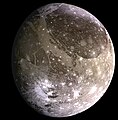Vaizdas:The Galilean satellites (the four largest moons of Jupiter).tif
Nuoroda į pagrindinį puslapį

Rinkmenos TIF peržiūros JPG dydisː 800 × 262 taškų. Kitos 2 rezoliucijos: 320 × 105 taškų | 640 × 210 taškų.
Didesnės raiškos iliustracija (1 830 × 600 taškų, rinkmenos dydis: 1,51 MiB, MIME tipas: image/tiff)
Rinkmenos istorija
Paspauskite ant datos/laiko, kad pamatytumėte rinkmeną tokią, kokia ji buvo tuo metu.
| Data/Laikas | Miniatiūra | Matmenys | Naudotojas | Paaiškinimas | |
|---|---|---|---|---|---|
| dabartinis | 2011 m. gruodžio 29 d., 15:54 | 1 830 × 600 (1,51 MiB) | wikimediacommons>Prof. Professorson | {{Information |Description=This composite includes the four largest moons of en:Jupiter which are known as the Galilean satellites. The Galilean satellites were first seen by the Italian astronomer en:Galileo Galilei in |
Paveikslėlio naudojimas
Paveikslėlis yra naudojamas šiuose puslapiuose:






